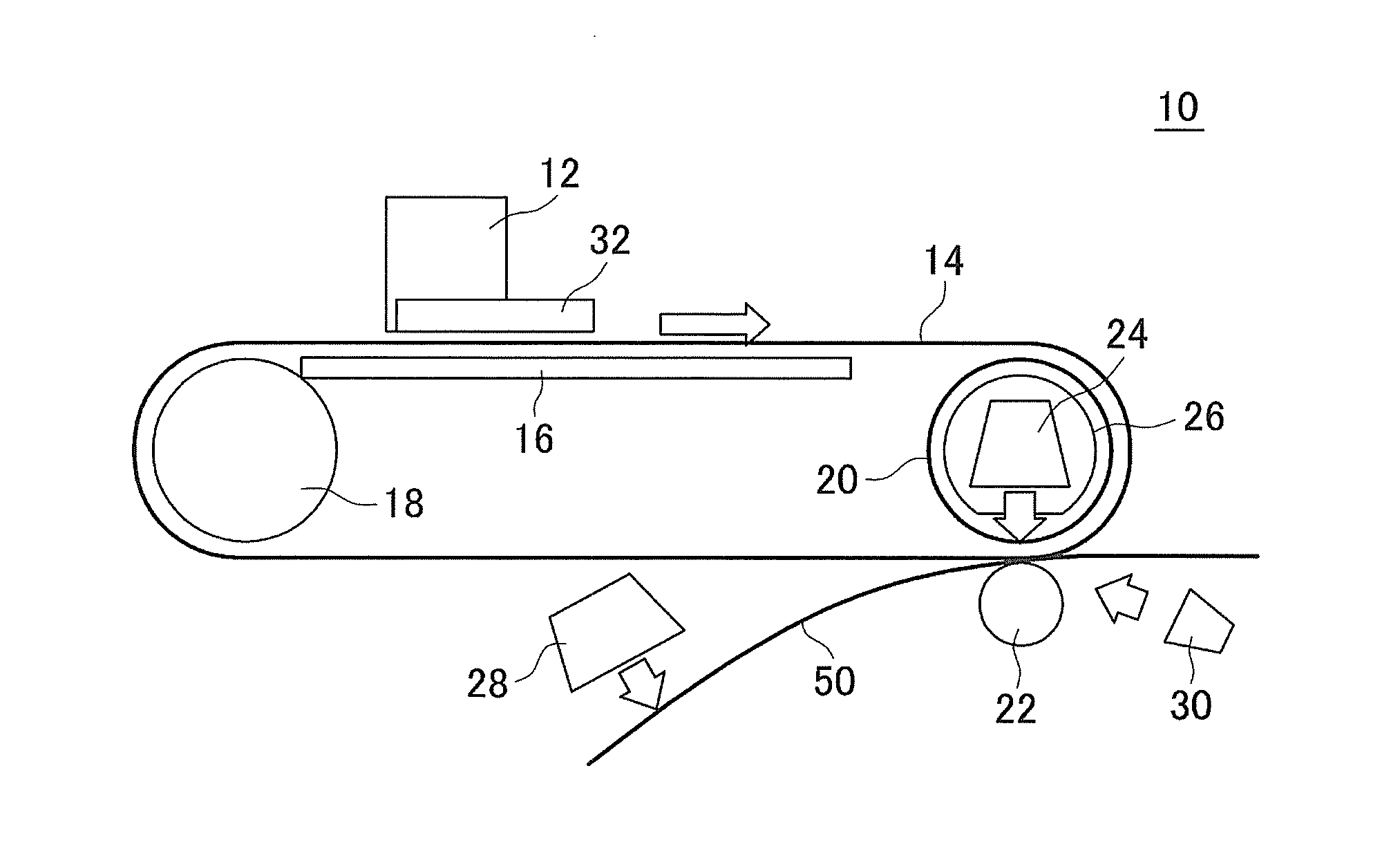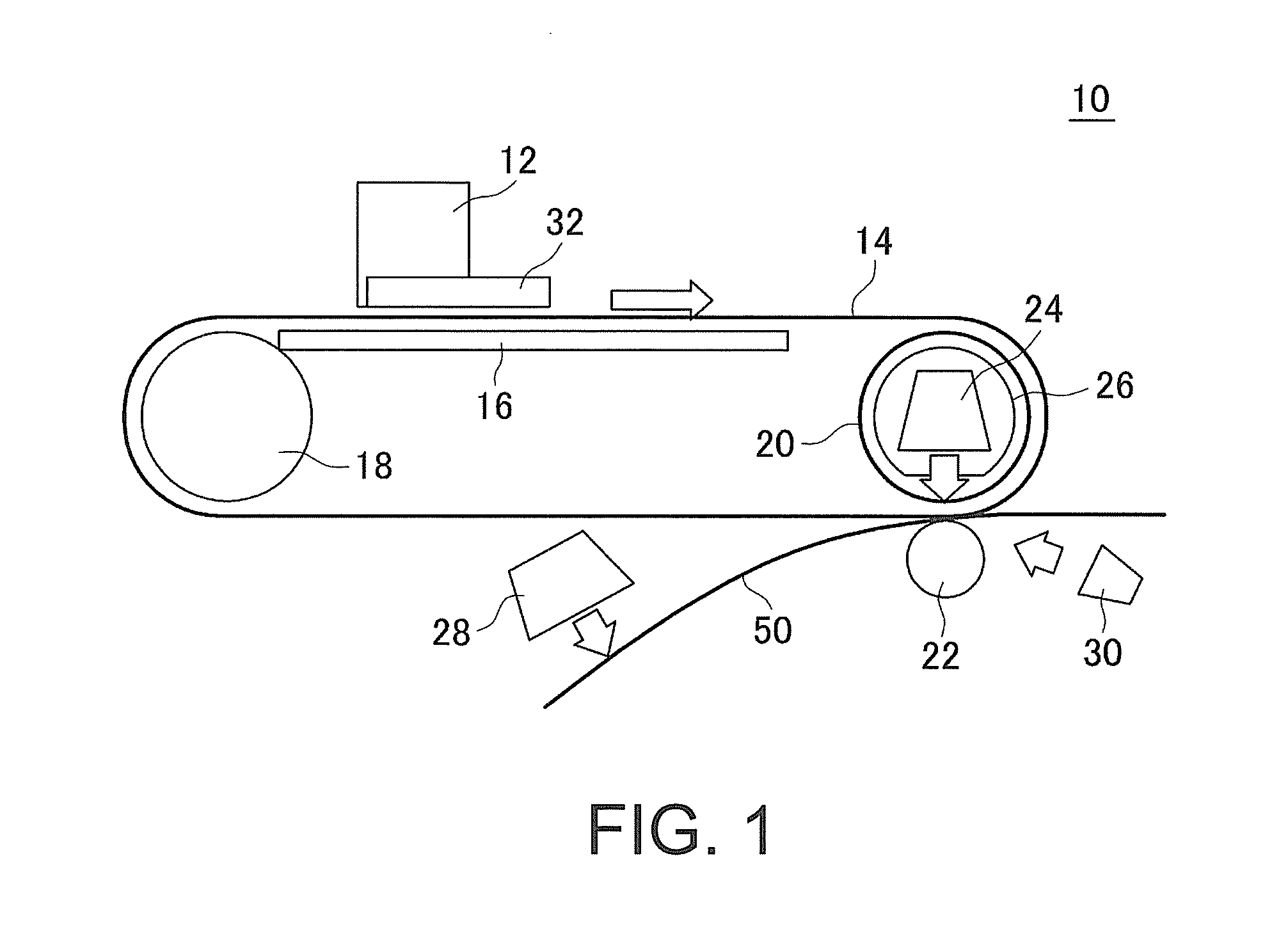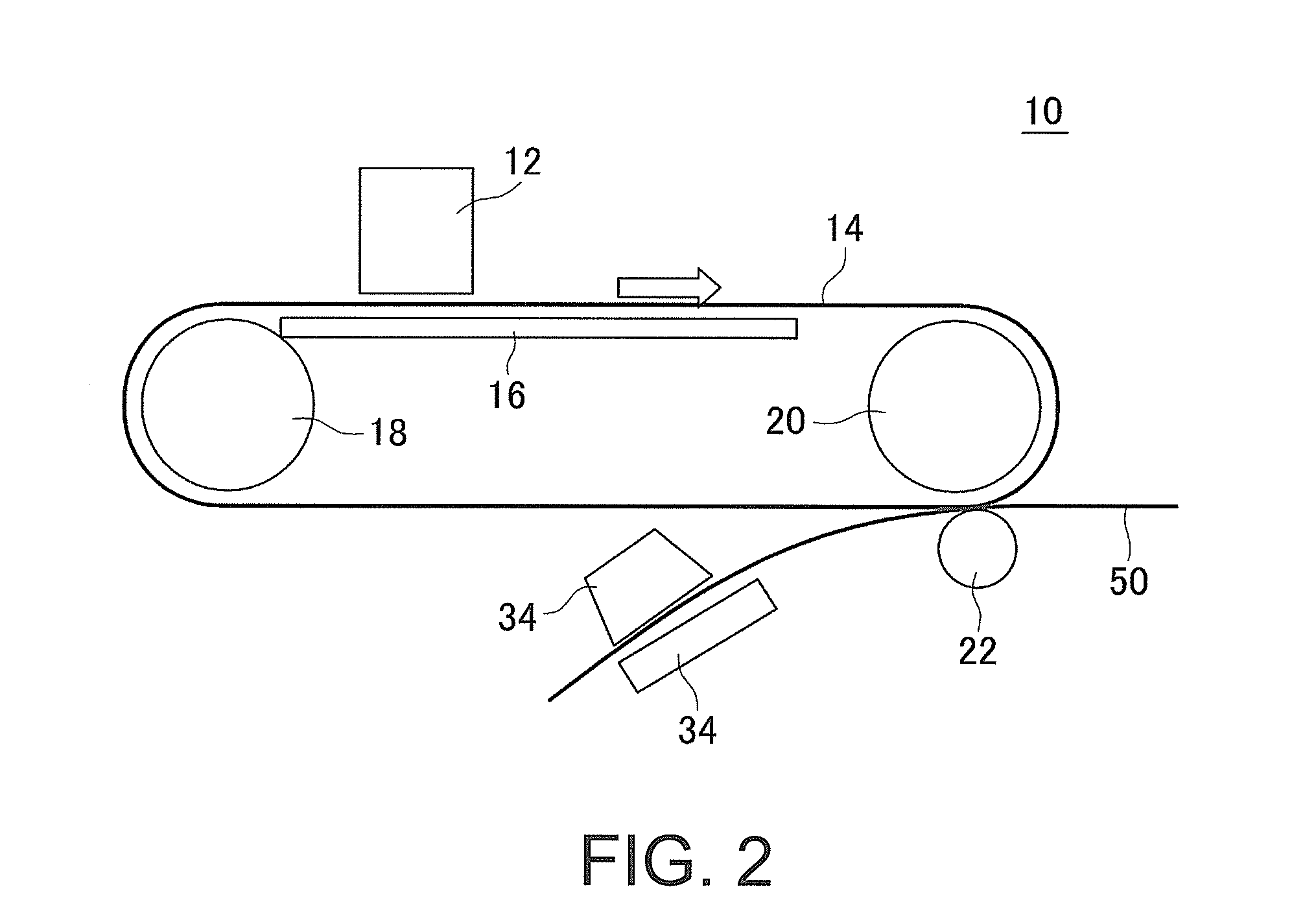Printing apparatus and printing method
a printing apparatus and printing method technology, applied in the field of printing apparatus and printing method, can solve the problems of limited irradiation conditions of partially cured ink, difficulty in adequately bringing the partially cured ink to the partially cured state, and difficulty in using inks other than uv curable inks of specific spectral absorption properties, so as to accurately and appropriately print the desired image, accurately and appropriately suppress the bleeding of ink dots
- Summary
- Abstract
- Description
- Claims
- Application Information
AI Technical Summary
Benefits of technology
Problems solved by technology
Method used
Image
Examples
Embodiment Construction
[0065]Embodiments of the present invention are described below with reference to the accompanying drawings. FIG. 1 represents a first exemplary configuration of a printing apparatus 10 according to an embodiment of the present invention. The printing apparatus 10 is a printing apparatus that performs an image transfer printing. For example, the printing apparatus 10 prints a medium 50, for example, such as a paper, using an image transfer printing. Here, “printing” means, for example, forming an image (such as characters and graphic patterns) on the medium 50. The printing apparatus 10 also can be deemed as an image forming apparatus that forms an image on the medium 50 by using a digital offset printing.
[0066]The medium 50 is, for example, a plain paper. The medium 50 may be, for example, a paper without an ink receptive layer. The medium 50 also may be a non-paper medium. For example, the medium 50 may be any of various media made from materials such as a plastic, resin, and metal...
PUM
 Login to View More
Login to View More Abstract
Description
Claims
Application Information
 Login to View More
Login to View More - R&D
- Intellectual Property
- Life Sciences
- Materials
- Tech Scout
- Unparalleled Data Quality
- Higher Quality Content
- 60% Fewer Hallucinations
Browse by: Latest US Patents, China's latest patents, Technical Efficacy Thesaurus, Application Domain, Technology Topic, Popular Technical Reports.
© 2025 PatSnap. All rights reserved.Legal|Privacy policy|Modern Slavery Act Transparency Statement|Sitemap|About US| Contact US: help@patsnap.com



